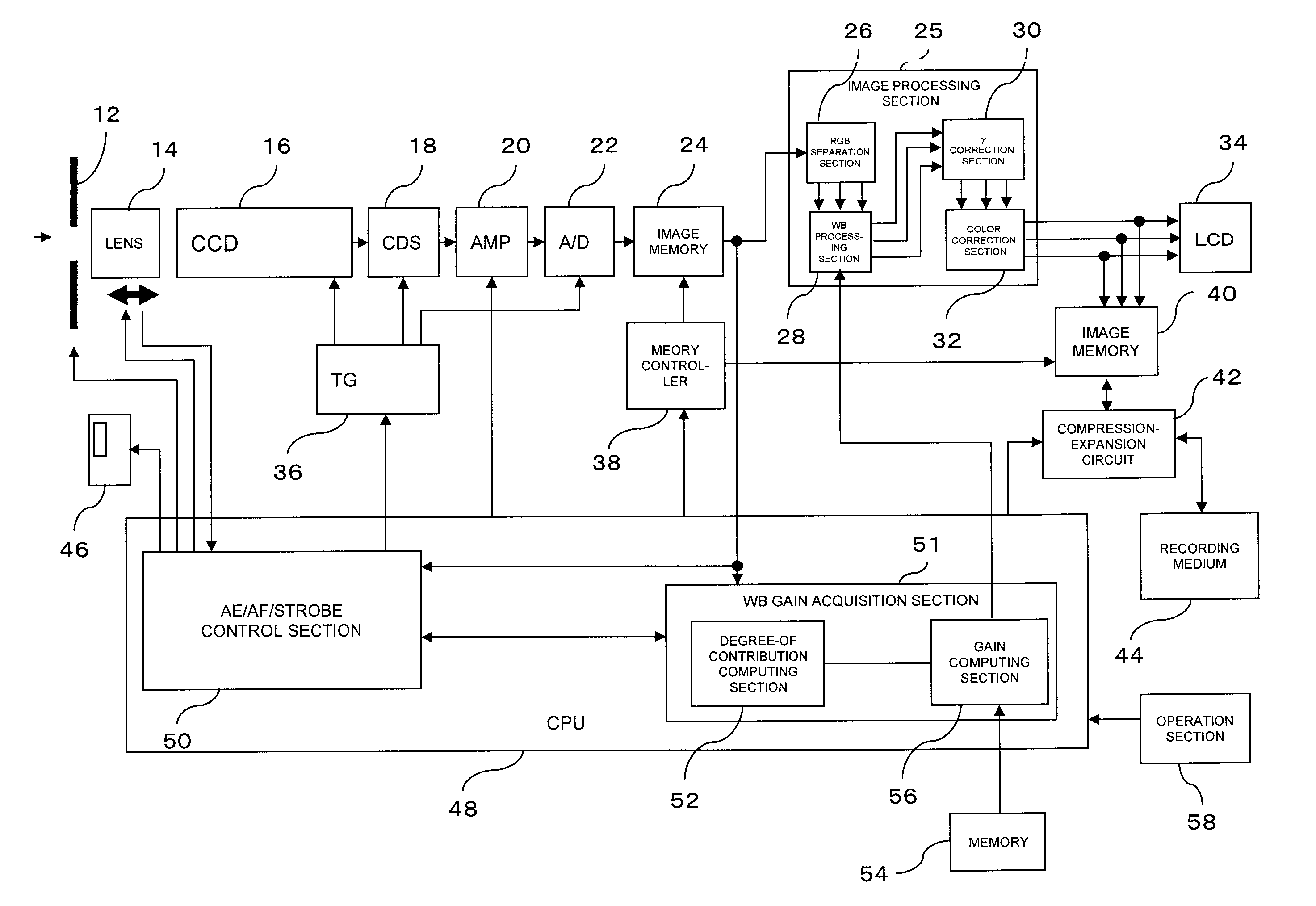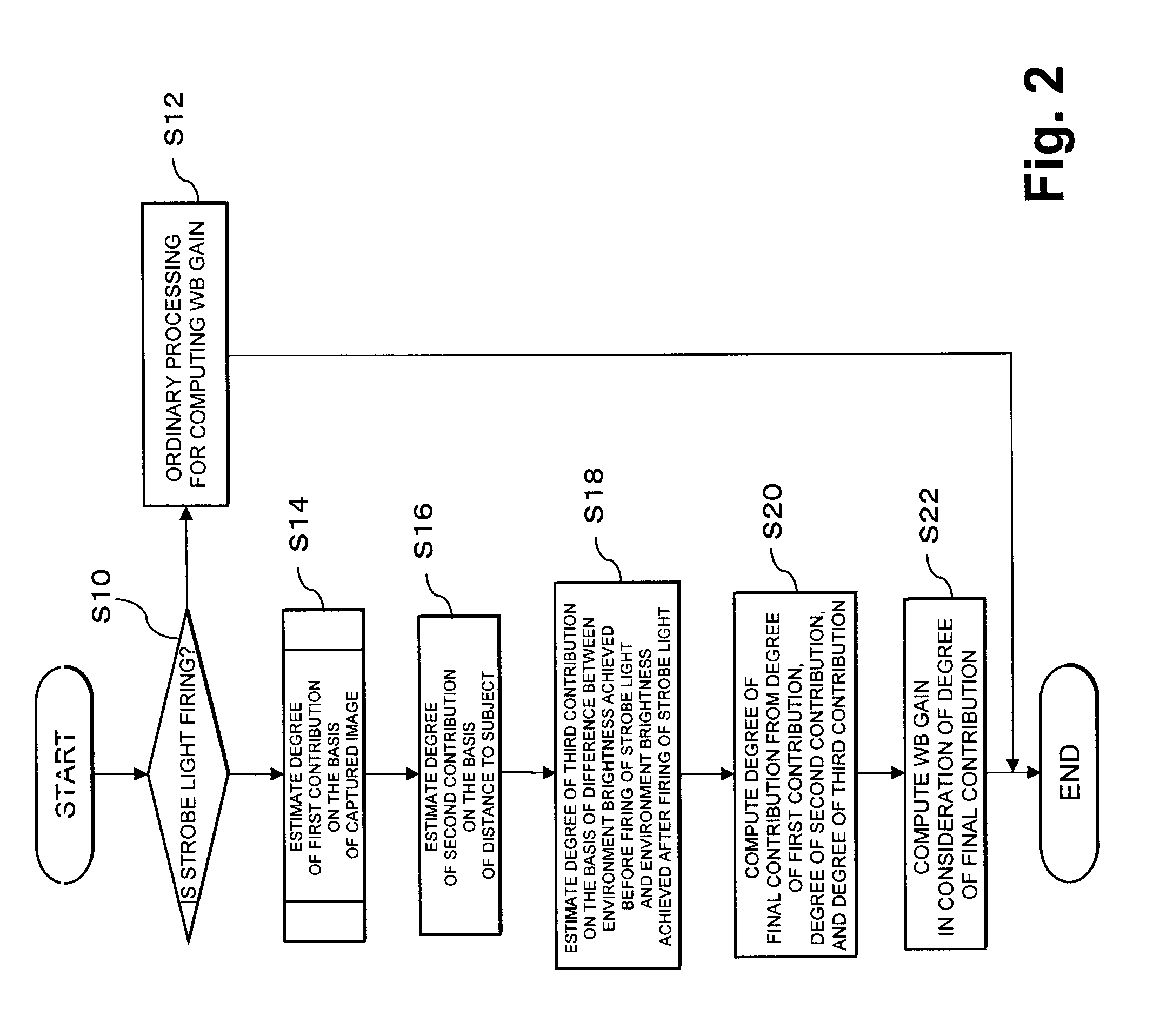Gain calculating device
a calculating device and gain technology, applied in the field of gain calculating devices, can solve the problems of low degree of precision inability to compute an appropriate white balance gain, and inability to achieve high degree of reliability in estimating the contribution of strobe light, so as to achieve preferable white balance gain and high reliability. the effect of contribution
- Summary
- Abstract
- Description
- Claims
- Application Information
AI Technical Summary
Benefits of technology
Problems solved by technology
Method used
Image
Examples
Embodiment Construction
[0039]An embodiment of the present invention will be hereinbelow described by reference to the drawings. FIG. 1 is a block diagram showing the configuration of a digital camera 10 which is an embodiment of the present invention. Light from a field (hereinafter simply called “light”), which has entered by way of an aperture member 12 and a lens 14, comes into a focus on a CCD 16, which is an image-capturing device. The amount of opening of the aperture member 12 and the amount of movement of the lens 14 are controlled by a CPU 48. The CCD 16 converts the input light into an electrical signal, and outputs the thus-converted electrical signal as captured-image data. Timing at which the CCD 16 performs photoelectric conversion is controlled by the CPU 48 via a timing generator (TG) 36. The CCD 16 always stores and sweeps electric charges at given intervals in order to acquire a preview image to be displayed on an LCD 34. Moreover, when a user's command for capturing an image is input, p...
PUM
 Login to View More
Login to View More Abstract
Description
Claims
Application Information
 Login to View More
Login to View More - R&D
- Intellectual Property
- Life Sciences
- Materials
- Tech Scout
- Unparalleled Data Quality
- Higher Quality Content
- 60% Fewer Hallucinations
Browse by: Latest US Patents, China's latest patents, Technical Efficacy Thesaurus, Application Domain, Technology Topic, Popular Technical Reports.
© 2025 PatSnap. All rights reserved.Legal|Privacy policy|Modern Slavery Act Transparency Statement|Sitemap|About US| Contact US: help@patsnap.com



